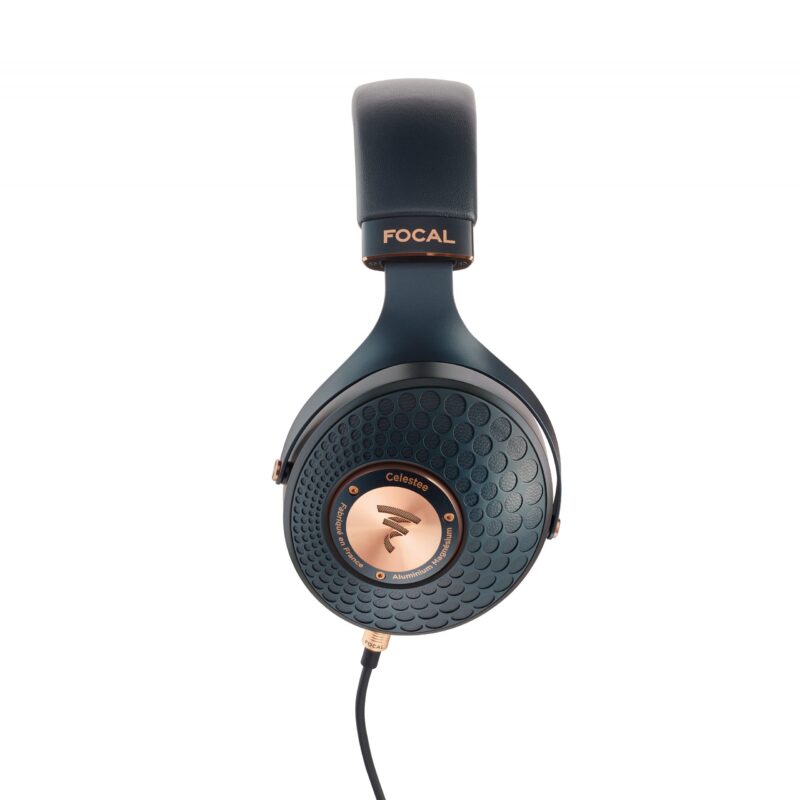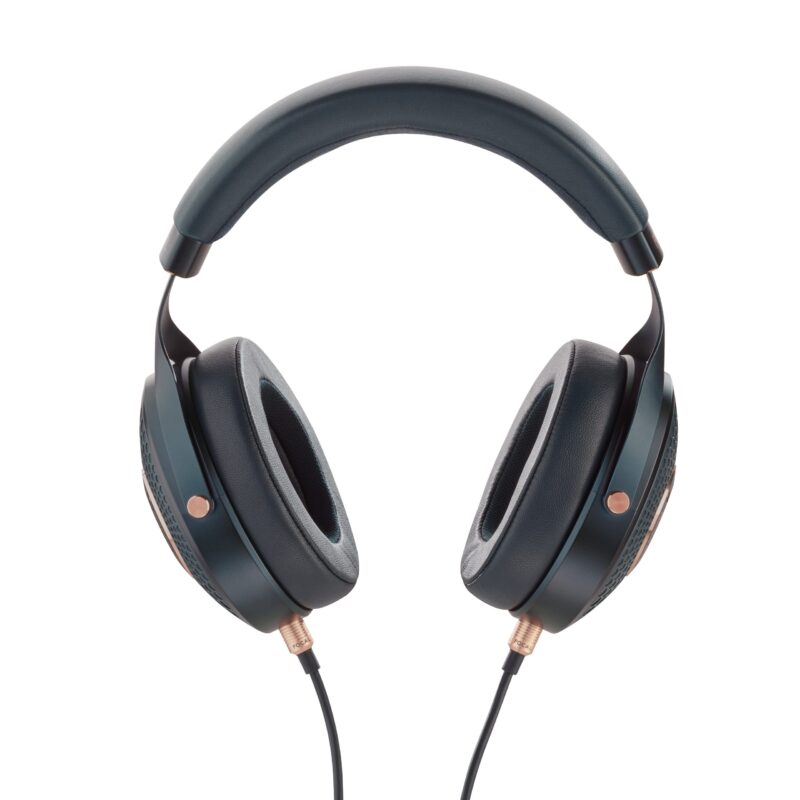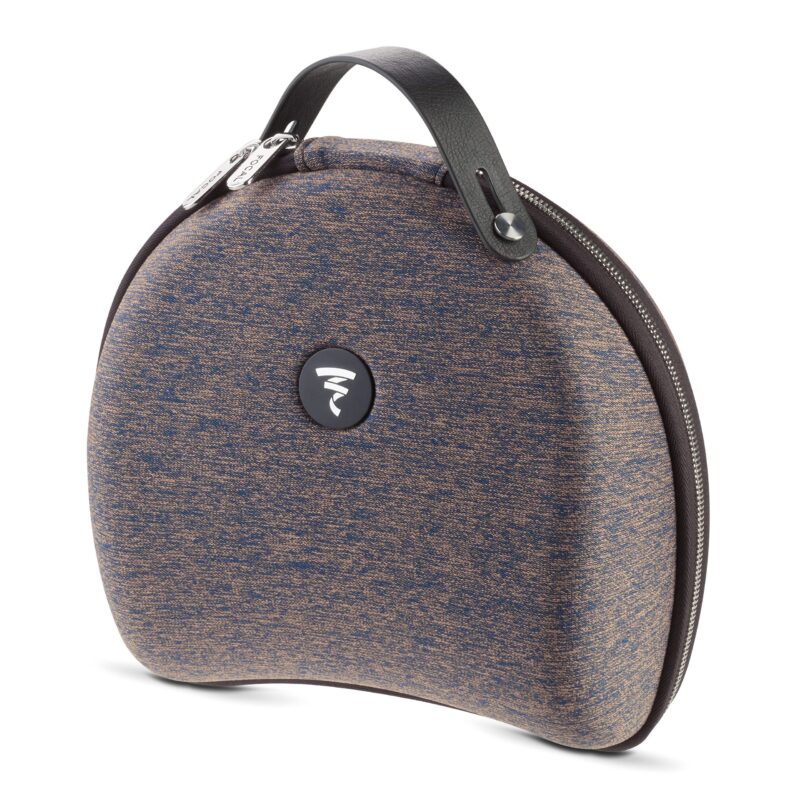Exactly two years ago I had the pleasure of testing Focal’s most expensive closed headphone model, Stellia. Real high-end headphones of top build quality, and acoustically, Stellia is the best I’ve heard among closed. Ever. With perfect balance between fullness, details and dynamics. Stellia sounds so sparklingly good, that most other headphones fade in comparison. On toip of that, they are easy to drive without a very expensive amplifier, and the infatuation is complete. The downside is the price: Focal Stellia costs two and a half thousand Pounds! Precisely this is a good reason to introduce a cheaper high-end model, namely Celestee. The price here is “only” £850, which is stille a serious price, but is not insurmountable for those who are more than interested in good sound.
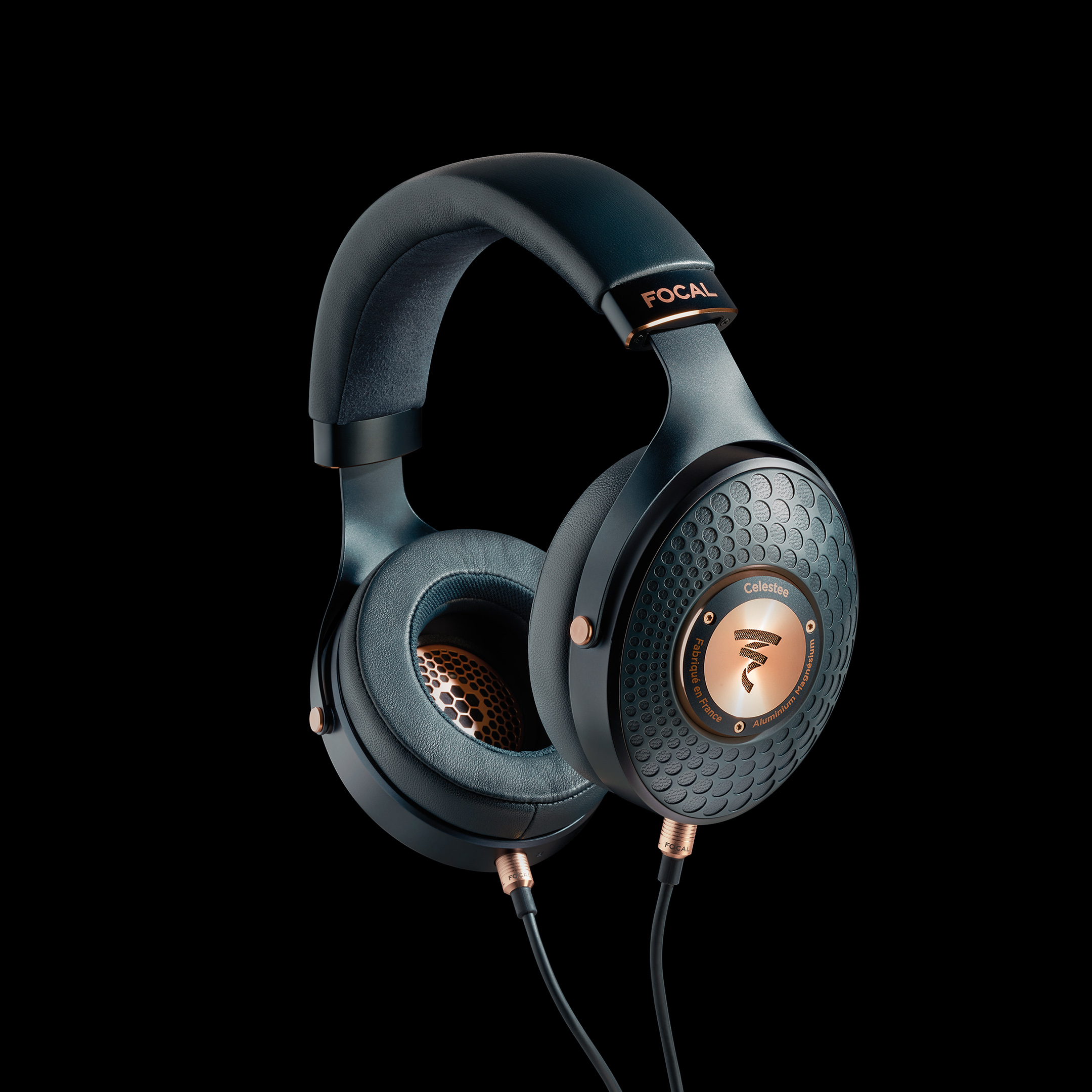
Easy to drive
With 35 ohm impedance and 105 dB sensitivity, the headphones are so easy to drive that you do not need to spend another fotune on an amplifier. They sound surprisingly good straight with the cell phone output jack, although of course they deserve something proper. You go a long way with a Dragonfly Cobalt portable DAC, but should treat yourself to a Chord Mojo for portable use.
Because it has been thought that Celestee will actually work with portable players, they are equipped with a short 1.2 meter unbalanced cable.
Heir to Elegia
Focal Celestee takes over after the outgoing Elegia. Unfortunately, I never got to test Elegia myself, but they are described by many as the headphones that most deviate from Focal’s sound signature; they sound very neutral, and can thus be a good tool for a sound engineer. But where other Focal headphones have a punchy bass and a little extra spice in the treble range, Elegia sounds grayer and – many believe – on the verge of boring. Celestee, on the other hand, will fit in better with the rest of the Focal family, with a fatter and tougher bass and more brilliant treble reproduction.

Fantastic quality impression
Celestee is a headphone you want to own as soon as you look at it, close to the extent of being mouth-watering. Trustworthy aluminum all the way, with a deep navy blue color on the cups and brass-colored details that break up, on the outside of the earcups and at the bottom of the headband. An aluminum membrane on the outside of the bells is pierced with circular stitches in a pattern with gradually increasing and decreasing sizes. This will both reduce resonances in addition to shifting them to more natural frequencies for the ears.

Inside the earcups, the drivers are protected by a beehive-patterned grid in brass-colored aluminum. The drivers are M-shaped, seen in profile, as Focal believes to have found that this is the shape that gives the best rigidity in relation to mass. Where the drivers of the more expensive Stellia use diaphragms of beryllium, the choice of material here has fallen on an alloy of aluminum and magnesium. As on Elegia, but the alloy should be a further developed and improved.
Where Elegia had fabric covered earpads, Celestee’s are imitation leather. Which insulates extra well, and lies beautifully against the head. They sit a little firmer than I remember from Stellia, but not so that they push uncomfortably in any way. It is comfort all the way.
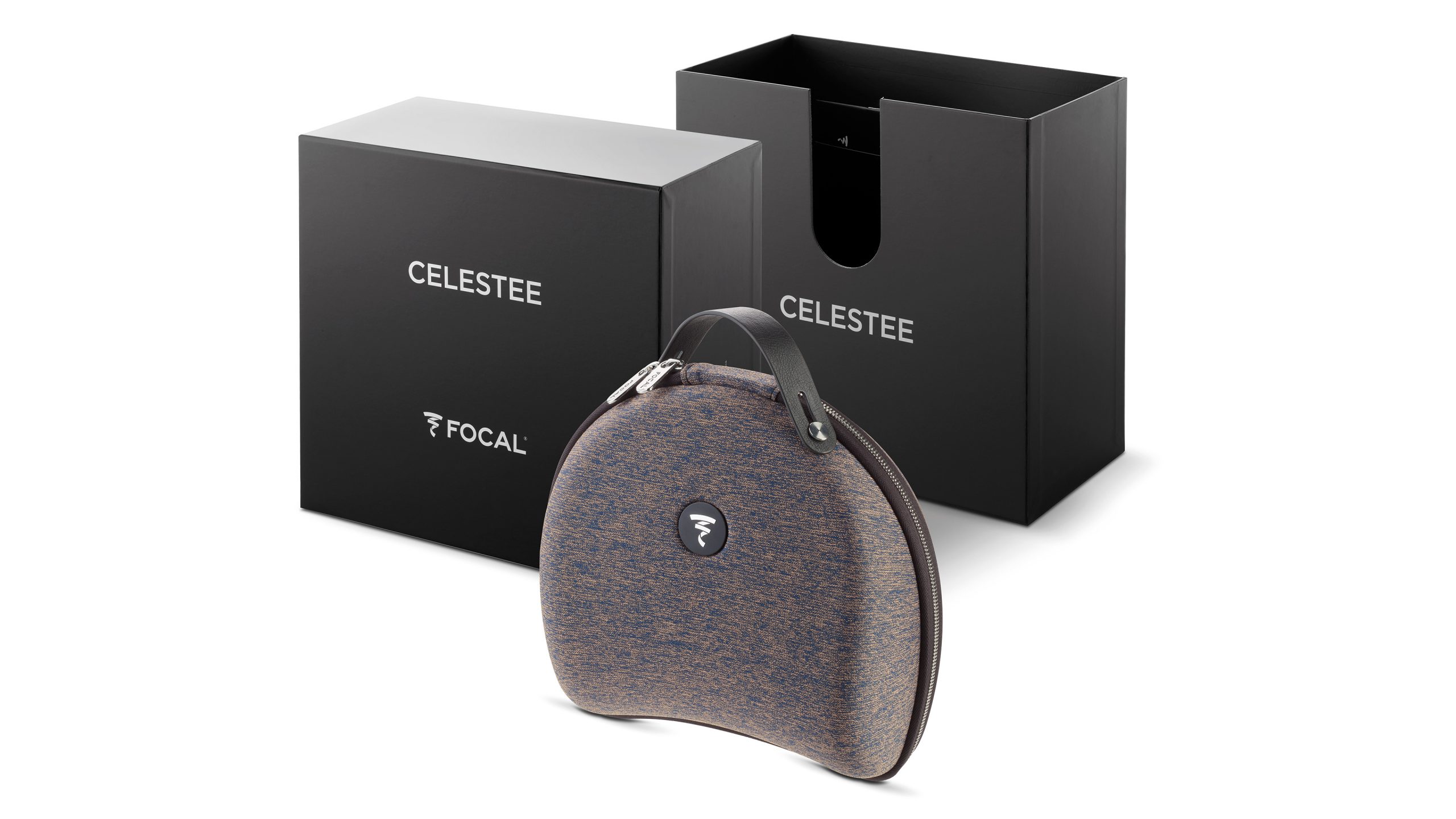
The sound of Focal Celestee
Stellia are probably the best closed headphones I’ve ever heard. And they still are, but at a third of the price, Celestee is so close that I almost have to pinch my arm. Connected to the excellent amplifier Sennheiser HDV 820, the full-bodied and ready-made bass I remember from Stellia is in place, although the deep bass register feels a little more restrained in Celestee. The little “party hump” in the middle bass register is there, too, with lots of punch and fun, only a little more toned down compared to Stellia. Never boring, just a little more moderate.
The detailed and dynamic midrange from Stellia is largely taken care of, and Tim Scott McConnel’s voice emerges with all its soreness on the fantastic song The Man I Am from the TV series Exit. Gwen Stefani’s new single Slow Clap has a lot of energy, while Stefani’s voice is clear as the northern lights over the Arctic.
Crisp treble
Like Stellia, Celestee has an extremely crisp and well-defined treble. You can distinctly hear every single beat on the snare drum, and the “starry sky” in the top register shines out from a black background. But the headphones lack the finesse and micro details of their much more expensive siblings. Yes, there is a whole lot of details here, but they appear a little more forced where they with Stellia sound more like a cool breeze that caresses the ears. And it is first and foremost here that it is revealed that Celestee is a cheaper pair of headphones.
When I switch to the more warm-sounding amplifier Auralic Taurus, the treble gets a little rounder, but the trend is still there.
A pair of headphones that are closer to Celestee in price than Stellia are Audio-Technica ATH-AP2000Ti. These are more unadorned in the bass than Celestee, and also more transparent at the top without going to the detriment of the details. Definitely a fierce challenger. But they do not entertain in the same way, and a flat and tame recording gets no traction. Celestee spices up the bass just the little that is needed, so that flat pop songs also engage. Without them being perceived as colored in any way.

Closed versus open
Celestee are closed headphones, with the advantage of not leaking the music out so that people around you hear. At the same time, noise is effectively shut out (no, you do not actually need active noise cancellation). This also means that you get closer to the music, not least in the bass. For example, the bass is much fuller and hard-hitting with the Celestee than with the otherwise fantastic Sennheiser HD 800S.
On the other hand, closed headphones do not have the same dynamics as open ones, because the overpressure and underpressure formed in the chamber will act as a damper on the driver.
Focal has actually compensated with a small bass reflex port on the outside of each earcup, which ventilates out excess energy that builds up in the chamber. This makes the element move faster, which in turn gives a tighter and more dynamic sound. It will never be quite as good as with open headphones, but Celestee comes close. This is confirmed by the aforementioned HD 800S, which has an even better transient response, and which generally breathes more than Celestee. The HD 800S also has a generally larger and warmer midrange, and more velvety harmonics. But Celestee is still impressively dynamic and tight for closed headphones to be. Simply a fantastic middle ground.

Conclusion
Focal Celestee is a pair of very well-made, closed headphones. At a little over £800, you get more for your money than we dared hope for, and the feeling of quality is one of the best we have encountered. For more than just the sound quality, the build details will give a greater joy of ownership than most other things in both this price range and above.
When the headphones are also frighteningly close to their more expensive siblings Stellia at three times the price, the competitors have a bit of everything to fear here.
The sound is characterized by a delicious and powerful bass, while the details splash from the midrange and upwards. In the harmonic area, the details splash to such an extent that you get everything. Just a little less fine-meshed than with Stellia.
If you want a sound quality you only get with a pair of very expensive headphones, but do not want the sound leakage from open variants and also do not want to spend a lot of money on amplifier as well (although it is also recommended here), then you should have Celestee high on the list. Maybe at the very top.

We think
Fantastic bass response, lots of details and energy. Excellent comfort, and the quality impression is second to none! Some will probably think that the treble strikes a lot of sparks.
832 €
Specifications
- Type: Closed, over the ear
- Principle: Dynamic
- Collapsible: No.
- Microphone/remote control: No-no
- Cable: 3.5mm + 6.3mm adapter (1.2m)
- Elements: 40 mm aluminum/magnesium
- Impedance/sensitivity: 35 ohm/105 dB/mW 1kHz
- Weight: 430 grams (without cable)
- Color: Navy blue with copper details
- Web: focal.com





